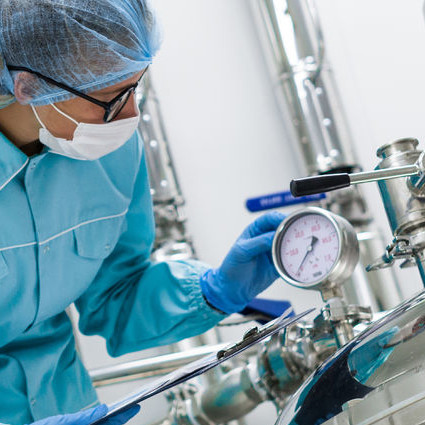Self-inspections
What are Self-inspections?
A self-inspection takes place when a facility examines its own processes. The facility may be looking for potential safety hazards or quality concerns, or simply making sure it is compliant with regulations.
Food facilities can conduct these self-inspections to be better prepared for third-party audits, especially when inspections are unannounced.1 Self-inspections may involve personnel, paperwork, or processes, or a combination of all three.
Relevance and Regulation
Self-inspections by themselves are not required by the FDA or other federal agencies. However, they are widely regarded as a useful tool for ensuring compliance with regulatory requirements. This not only includes food safety issues under the FDA, but also local health requirements and OSHA workplace safety standards.2
The FDA inspects food processing facilities before granting agency approval, and also investigates reports of health, safety, and compliance concerns. In addition, the agency conducts occasional, routine inspections at food and drug processing facilities. Such inspections are usually scheduled in advance.3
Application
Self-inspections are meant to prepare a facility for a third-party inspection, so there is no single method for conducting them. Each facility’s inspection may vary, but here are some general steps for getting the most out of this exercise:4
- Choose the individual or team who will be responsible for conducting the self-inspection.
- Schedule the inspection, and be aware of how long it will take. While small facilities might be inspected in a day, larger organizations usually take longer.
- Decide how to divide up inspection departments or “zones.” This is especially important in larger facilities, where it is less practical to tackle the full inspection at once.
- Determine which tools you will need to conduct the self-inspection.
- Create a checklist of what needs to be examined.
- Besides storage areas and production equipment, your inspection also should include documentation and files. Agencies such as the FDA may include reports and other administrative documents in their inspections.5
- You may decide to alert all personnel to the self-inspection beforehand, or conduct it unannounced.
- Document all observations.
- Address any problems as soon as possible.
References
- Leal, J. “Unannounced Audit Preparedness.” AIB Update, March/April 2017, p. 17. [[1]].
- Occupational Safety and Health Administration. “Self-Inspection.” Small Business Handbook. 2005. https://www.osha.gov/Publications/smallbusiness/small-business.html#self.
- U.S. Food and Drug Administration. “What Does FDA Inspect?” FDA Basics. 19 Dec. 2017. https://www.fda.gov/AboutFDA/Transparency/Basics/ucm194888.htm.
- AIB International. “Tip of the Week: Self-Inspection 20/20: Combating Nearsighted Inspections to Unlock Your Team’s Full Potential.” Food First, 17 Feb. 2017. http://foodfirst.aibonline.org/foodfirst/2017/2/16/self-inspection-2020-combating-nearsighted-inspections-to-unlock-your-teams-full-potential.
- U.S. Food and Drug Administration. “What Should I Expect during an Inspection?” FDA Basics for Industry, 27 April 2016. https://www.fda.gov/ForIndustry/FDABasicsforIndustry/ucm237624.htm.


